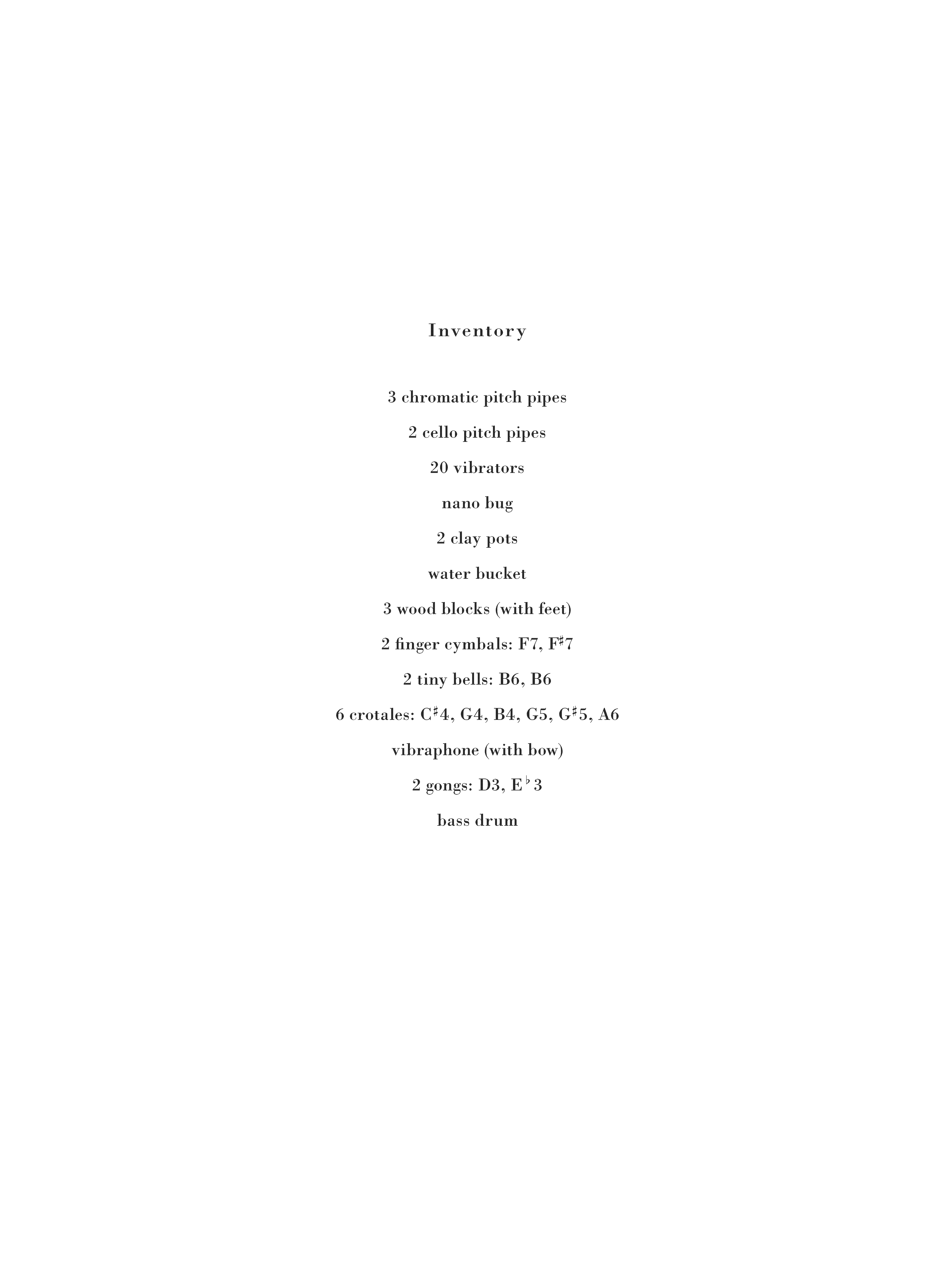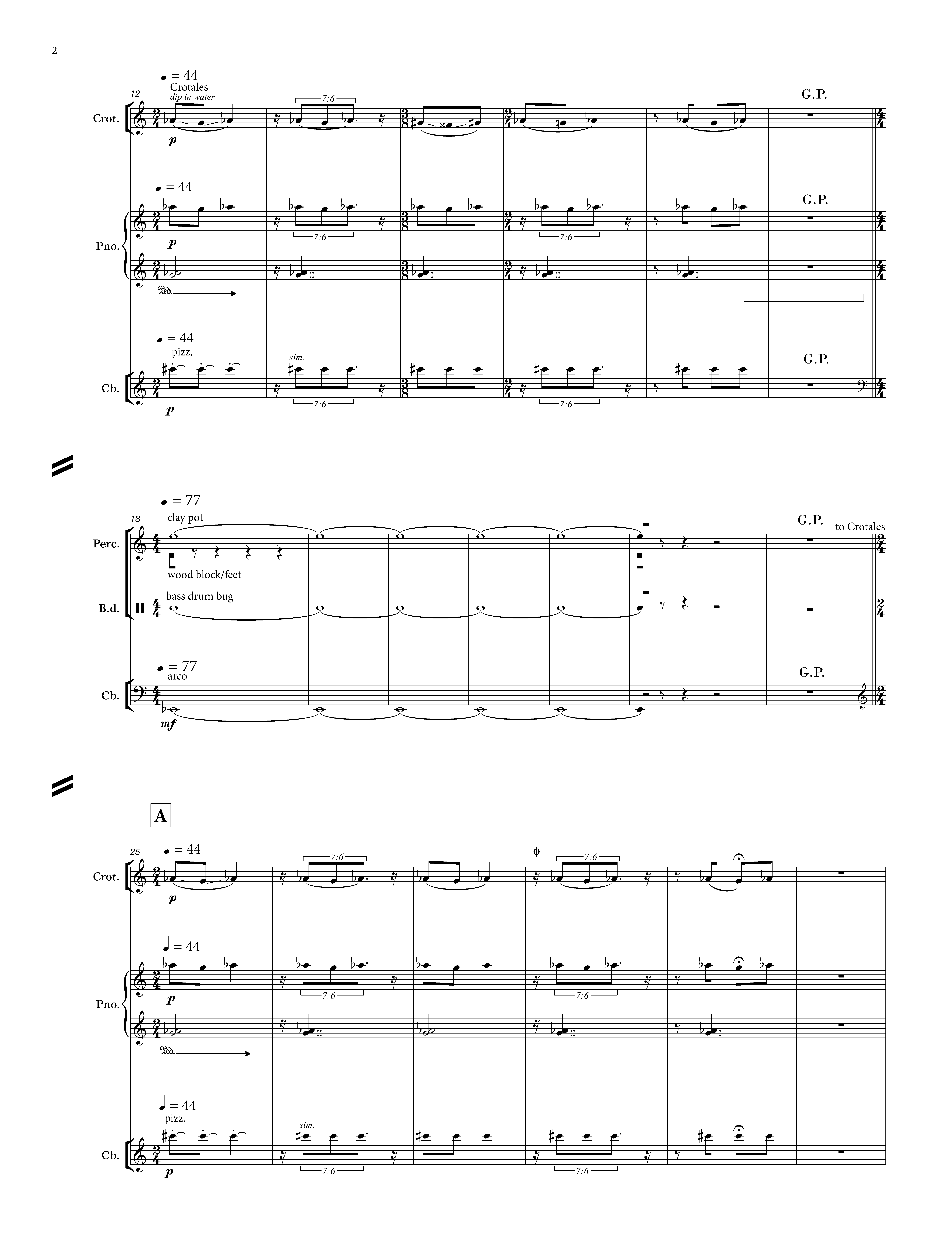Scott Wollschleger
American Dream
for piano, contrabass, and percussion
(2017)| Duration | 35' |
|---|---|
| Commission | Commissioned by Bearthoven |
| Premiere | February 28, 2018; Roulette Intermedium, Brooklyn, New York; Bearthoven • Karl Larson/piano, Matt Evans/percussion, Pat Swoboda/bass |
| Instrumentation | See preview pages for full percussion inventory. |
| Technical requirements | Three scores are required for performance. |
| Publisher | PSNY |
Media
Program Note
Driving on the interstate, one stops at gas stations, a state fair, a sleazy motel. The memory of these places blend together—commercial rest stops that look the same connect places, blurring time. Trying to make sense of the many impressions and places, one creates a narrative from these fading images.
Similarly, Wollschleger describes American Dreamas an “abstract musical landscape of fragmented songs.” He emphasizes:
There was an urgency in the creation of the piece, spawned from my reflection on the state of the world and what I felt was a crisis happening in the country. I was able to get out of this sense of despair through writing the piece. The process changed me: as it went on it became less about the crisis I was sensing, and more about abstract sound and pattern. I composed blocks of musical time and wove them together in a discontinuous way. Knowing I was writing it for Bearthoven—who are able to jump between these different grooves to create a shock between competing ideas—allowed me to write in this way… Part of my aesthetic is acknowledging our experience in the world. This discontinuous experience of the world is where the piece comes from.
Karl Larson (piano) elaborates:
American Dreamis comprised of a number of ‘broken songs,’ including fragments from Gas Station Canon Songand We See Things That Are Not There. Scott breaks up the pure iterations of these songs and twists them into a more complex, wrought soundscape. This idea really gets to the essence of his style, I think. The juxtaposition of the beautiful and the grotesque / the lofty and the banal is a major theme in much of his music.
Our lives are filled with familiar sounds we learn to ignore. Wollschleger’s American Dream brings these sounds to the forefront: the white noise from a television set being turned on at 3AM, the faint sound of a carnival, the buzzing ecstasy of 20 vibrators (the final gesture of the work). Wollschleger makes other subtle references to pop culture through musical inside jokes, pointing out:
At the beginning of the piece, the meters alternate between 7/4 and 11/4, a hidden nod to the famed convenience store chain 7-Eleven. A lot of American Dreamis about ambiguous states—happy, sad, really goofy, really abject—and the oscillation between these seemingly contradictory feelings. This is my American Dream.
Pat Swoboda (bass) adds:
Of course your thoughts about the American Dream are always a reflection of yourself. There are those that do believe in a materialist version of that dream—the idea of ownership as fulfillment or success. Some people might think that it’s obscene, and to another person it might be the most beautiful thing they’ve ever heard—American Dreamreflects these differences in perception.
As the American Dream evolves with time, it becomes a combination of all our individual, potentially conflicting narratives. Can these come together to create one “dream” or do they break down through this incongruity?
– Anne Leilehua Lanzilotti
 0 items in your cart
0 items in your cart














